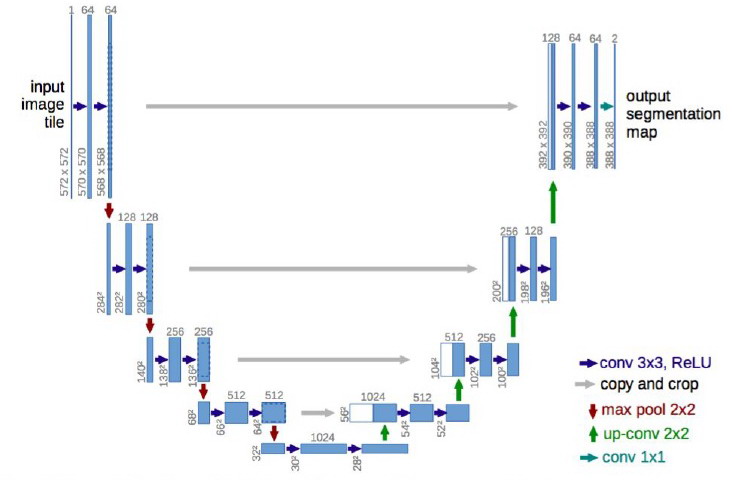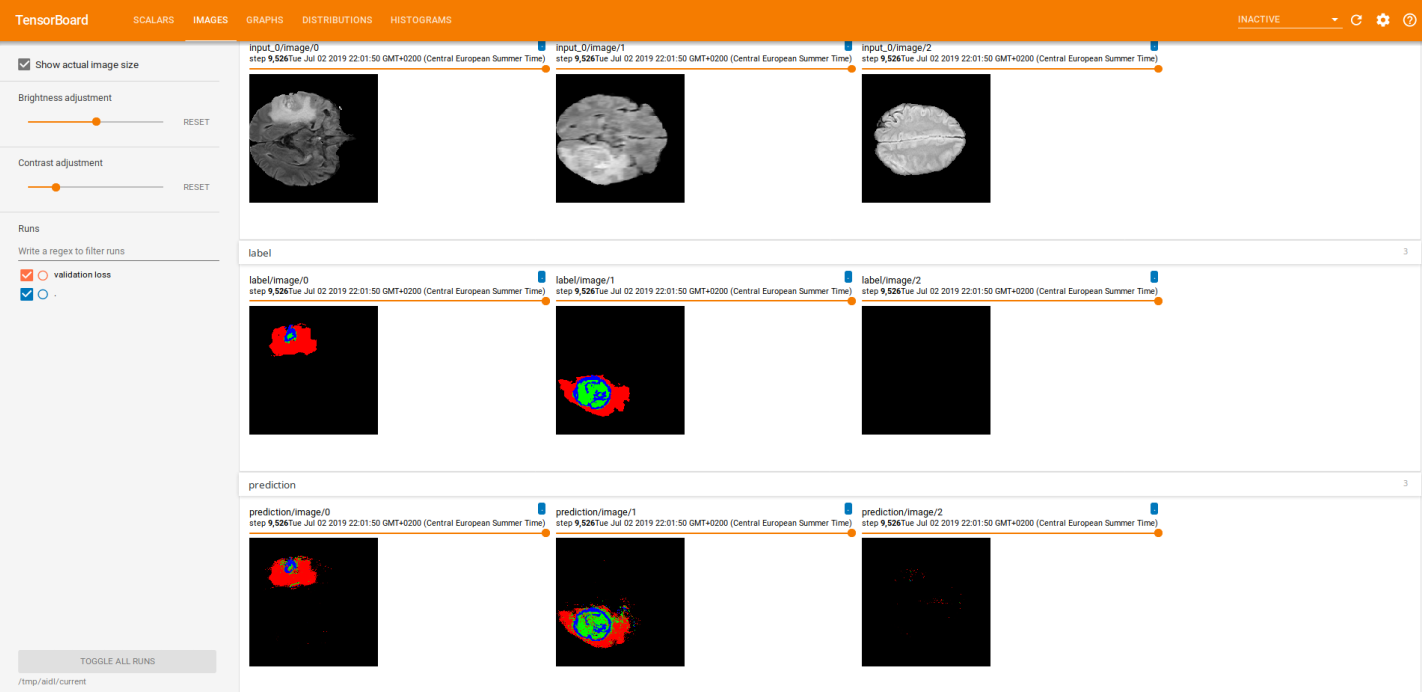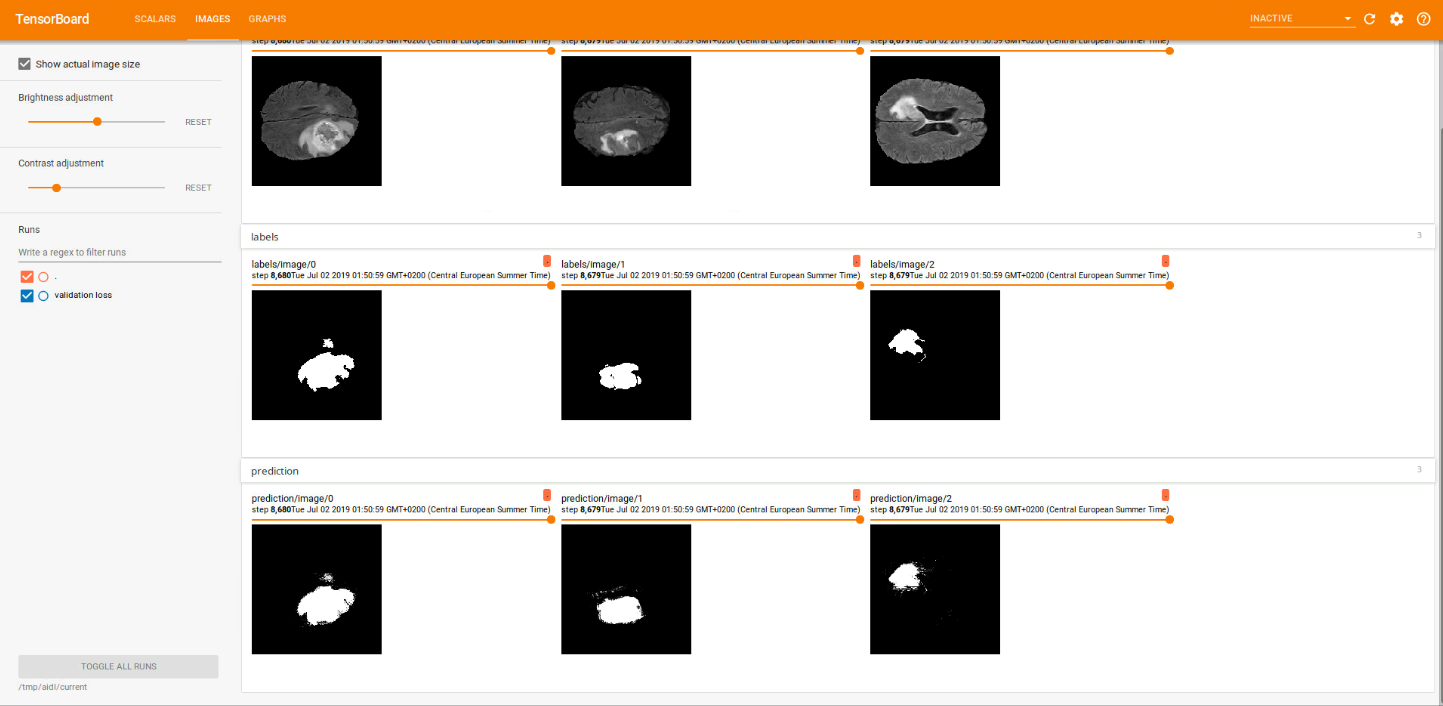BrainScan
This project is the result of the final assignment from the UPC Postgraduate course in Artificial Intelligence with Deep Learning. It consists on implementing the U-net model for medical image segmentation, precisely for brain tumor segmentation.
Team
David García
Aitor Jara
Eduard Mainou
Núria Sánchez
Santi Puch (Advisor)
Getting Started
These instructions will get you a copy of the project up and running on your local machine for development and testing purposes. For our model to work all of the dependencies are on the requirements.txt. Run the following command line on your local repository.
pip install -r requirements.txt
Structure of the repository
As we have already mentioned, the main goal was to implement the U-Net so as to perform image segmentation so as to identify the tumour. The part regarding the U-Net architecture can be found in the folder models (inside src). On the other hand, preprocessing (also in src) stores the scripts that deal with the already mentioned task of slicing and storing all the data. Finally, the scripts that actually perform the segmentation can also be found in the src folder. In fact, such folder contains a README file which explains in detail its content.
The other folder that can be seen from here is the data one, which mainly stores images used along the repository and used to illustrate some of the results.
The dataset
The BRATS challenge dataset was used to train and test this model. Find the data on the following link: http://medicaldecathlon.com/
This dataset consists on a training set composed of 484 patients and a testing one with 266 patients, although we kept a certain amount of the former so as to perform validation. See more about validation on the preprocessing folder (inside src).
Each patient involves four different 3D images (each one highlighting different areas of the tumour) plus another 3D image, which is the ground truth. Since we were not very confident dealing with 3D images, we decided to slice each of them axially into 155 slices.
Let us now explain the input of the U-Net and the labels. First of all, let us fix a patient. Then, we are going to take the first slice of each of the four images regarding that patient and we are going to concatenate them. Afterwards, we are going to take the second slice of each image regarding that patient and we are going to concatenate them. And we keep doing so until we obtain 155 blocks of 4 slices. For the sake of clarity, let us say that the k-th block will be the concatenation of the k-th slice of each image. At this point, we concatenate all the blocks. Therefore, a single patient is represented by this last block.
On the other hand, the label of a patient is an image whose pixels can take values 0, 1, 2 or 3, where 0 stands for the background and the other three ones stand for different parts of the tumour tissue.
In the different experiments that we have carried out, different ways of expressing the labels have been used. In some of them, we have regarded the labels as having one channel and taking values in the set {0, 1, 2, 3}, but, in some others, we expressed them using one-hot encoding, which implies that the labels had four channels. The main point of using the second approach is the fact that, when implementing the IoU metrics, the tensors should be represented using one-hot encoding. Another approach that we took was, instead of distinguishing between background and three different tumour tissues, we distinguished between background and tumour. That is, we performed a binary classification (at pixel level). It is worth noting that, when performing the binarization of the label, it can have two or one channels, depending on whether we are doing a one hot encoding or not respectively.
Implementation
Let us now show some results obtained after conducting some experiments. The parameters used are the ones by default on the scripts. As mentioned in the previous section, we took two different approaches: the 4-classes one and the binarization. Recall that the former means that each pixel was classified as an element of the set {0, 1, 2, 3} whereas the former implies binarizing the labels, {0, 1} so as to only distinguish between background and tumour.
Metrics
The metrics implemented has been intersection over union (IoU), which is a measure of the performance of the predictions. The below picture shows the IoU after 5 training epochs using the 4-classes approach. Note that, by default, the metrics is calculated for a whole validation epoch every 100 training batches (step_metrics parameter).
Loss
We trained our network on a GPU (1070ti) for 5 epochs, which required 6 hours, using the 4-classes approach. Below, you can find a picture depicting the training (red) and validation (blue) losses. The former is plotted for each training batch whereas the latter is calculated for a whole validation epoch, and therefore plotted, after 100 training batches (step_metrics parameter).
Training
While doing the training, we visualized the raw images along with its labels and the predictions (logits) in tensorboard. That is what the two images below illustrate. The first one corresponds to a 4-classes approach whether the second one corresponds to a binarization (background/tumour). In each picture, the first row shows the raw image, the second row the labels and the last one the predictions. Each column represents a different slice.
Note that the results depicted in the images were obtained after performing many training steps.
Testing
Finally, we did some inference. The two images below illustrate the predictions of three different slices, all of them visualized using Tensorboard. The first one, was performed using a 4-classes approach whether the second one corresponds to a binarization (background/tumour).
The first row shows the raw image and the second one the predictions.
References
- https://arxiv.org/pdf/1505.04597.pdf
- http://ronny.rest/blog/post_2017_09_11_tf_metrics/
- https://medium.com/ymedialabs-innovation/how-to-use-dataset-and-iterators-in-tensorflow-with-code-samples-3bb98b6b74ab
- https://towardsdatascience.com/understanding-semantic-segmentation-with-unet-6be4f42d4b47
- https://towardsdatascience.com/guide-to-coding-a-custom-convolutional-neural-network-in-tensorflow-bec694e36ad3
- https://www.tensorflow.org/guide/performance/datasets
- https://www.tensorflow.org/guide/datasets
- https://github.com/zhixuhao/unet/blob/master/model.py
- https://github.com/upcschool-ai/2019-spring-project
- https://invkrh.me/2019/03/11/tensorflow-specialization-learning-note/






